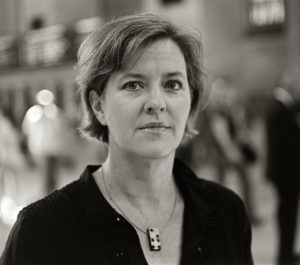
Jonah: 1
A story is a refusal. One drives down from the mountain and, looking ahead, watches a road up the mountain unfurl. Is it a separate road or the same road, somewhere connected? Driver and passenger: a continuum. One asks the other, over the gap, “Is this the world’s most extended switchback?” Change of topic, but not really. Jonah was swallowed by the whale after a long period of indifference. Jonah was a beautiful youth with a prominent widow’s peak. Anxiety was the story. Change of tense, but not really. Prying apart the jaws of the whale, his head inserted between the whale’s generous lips, Jonah’s forehead appeared as a globe, his widow’s peak the tip of South America. In that way they traveled the world. A story, not indifferent but different, remains so still, this still. A variant kind of tense. In that way, Cape Horn is not unlike a story, for it is the pivot in the switchback of the continent. Formed as a map in these lips. Hazardous passage. The story’s juncture of pacific and not pacific.
Jonah: 2
We say that Jonah was swallowed by a whale because his disobedience would be overruled by obedience. As though obedience were a thing that comes from outside us. That kind of fall from a precipice: the precipice of the vessel from which we fall into the current. The boat intends to go (somewhere). A boat is a made thing that makes destinations. But the current is its own obedience. Perhaps this is the branch in the road at which story and narrative part from each other. Did I say road? Jonah fell to the water, a softer, more undulatory landing. No landing at all. Such is obedience, an anti-gravity force that generates currents we cannot divine. In truth, Jonah fell hard as an infant, fell at an age before memory and sustained terrible injury. One might say that he kicked his infant feet from the bridge and fell headfirst to another bridge. It happened. Another variant of tense. Though he recovered, his skull is ridged with a prominent bone scar. What if. What if the body is a bridge that gives way? There was no scar then, just a gap through which Jonah fell. And on him: muteness. Shiny, utter pallor. What the pallor broadcast the whale saw as luminous: flesh. And the whale: inevitable. Succumbed to, ingested, this obedience.
Jonah: 4
Jonah is a bone scar, a series of ridges in the linearity of narrative. We derive our configurations of meaning where we can. As a child, Jonah adamantly rejected all patterns of contingency: “If you don’t stop biting your brother, you won’t get to go to the party.” Contingencies, as such, being patterns of power. Jonah hides in a cemetery at dusk. He is at the mercy only of his own, self-chosen, patterns. He wedges his body under a cast iron tub. Whereupon his mother turns out the bathroom lights, shuts the bathroom door. Pretends she has walked away. Patterns are wily: they come and they go. Like the body, compressed to fit into the smallest spaces. Jonah employs his fingers to make air quotes. Says: It was making me “angry.” Because the pattern of the gesture is always a pattern of emphasis. Comes out from behind a headstone only when his brother begins to weep in fear at the loss of Jonah. Jonah. Hidden or disclosed. If he is Jonah, he not permitted to be anyone else.
Jonah: 5
Aside from any other consideration, Jonah was a blowhole. A great gasp of air in admixture with the sea. An ocean swell carbonated with breath. A story consists in how long the creature can hold it all in, the lung of the thing. The pressure of depths on respiration, building and then: exuent. Forceful extraction of air from its own spongy deep. Paragraph break. Jonah takes swimming lessons in the midst of summer’s most frigid coastal fog. He refuses to enter the pool. If forced in, he then refuses to get out. Until one day: Jonah jumps right in. Asked why, he inclines his head toward the teacher, “I was fascinated by her body.” Ah, that. In times past, a story was a creature plumbing its own depths. Expulsion. Invisible fizz in the flat chlorinated plane. The character, or characters, exit the stage, the orifice, and the lesson.
***
Photograph of Elizabeth Robinson by John Sarsgard.




